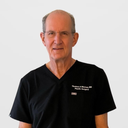Posted underSMAS Facelift q&a
What are the different techniques to elevate malar fat pads? And which is the strongest one?
I have low and heavy malar fat pads and tear through lines. And the junction/line where the lower eyelid and cheek meet is very low. How can you lift the malars fat pads so that this junction between the lower eyelid and the cheek comes higher up? How do you fixate the malar fat pad higher up? Would a facelift where skin and SMAS is trimmed, malar/rim implants and a malar fat pad elevation be able to lift and tighten the midface area sufficiently? Thank you!
Answers (6)
From board-certified doctors and trusted medical professionals
More SMAS Facelift Questions
See all SMAS Facelift Q&AWE SEND PRETTY
EMAILS
What’s trending? Who’s turning heads? Which TikTok myths need busting? We’ve got you. No fluff, no gatekeeping—just real talk. Get our free, unfiltered newsletter.





